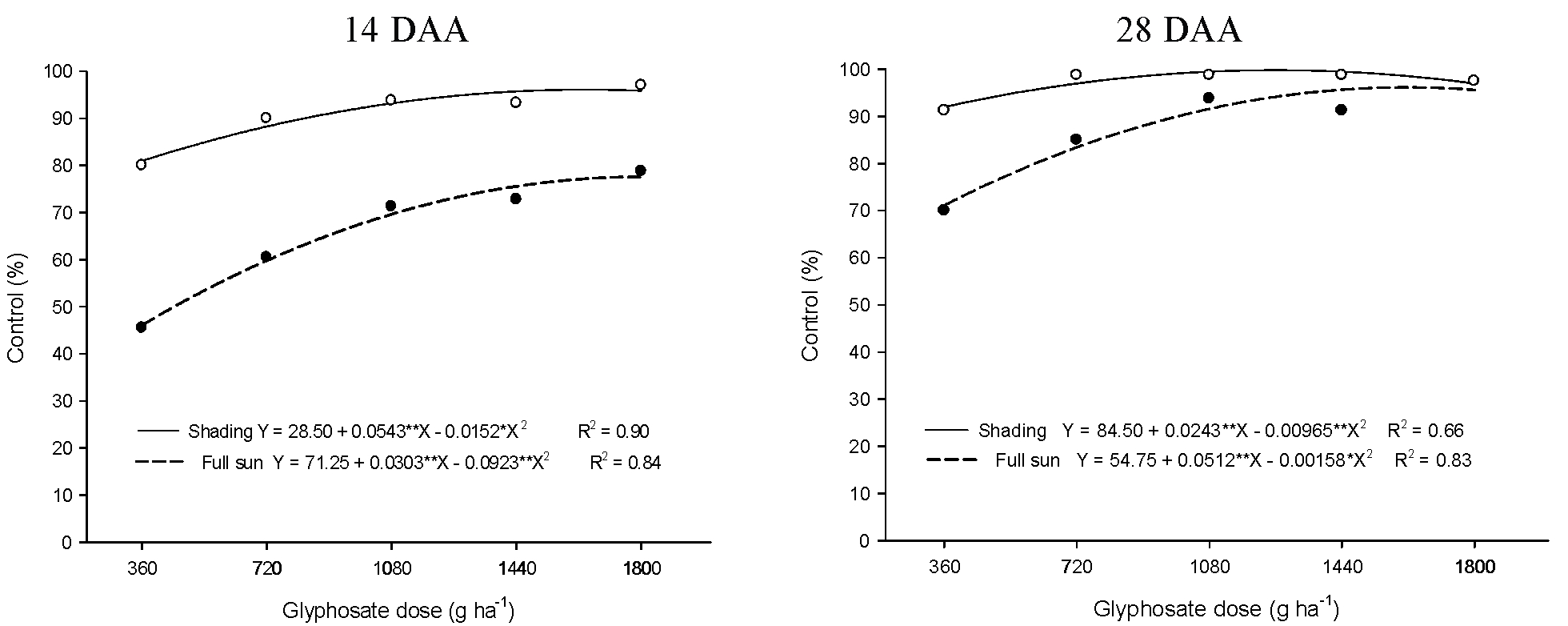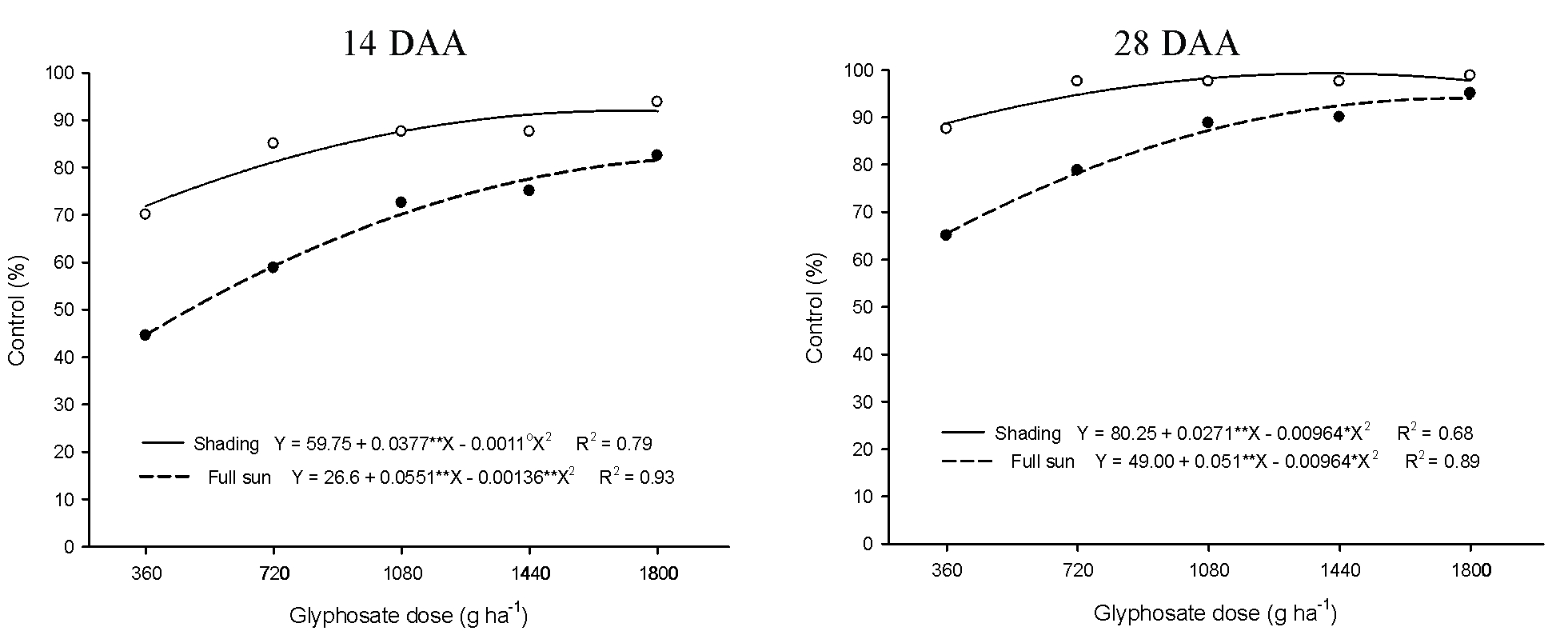ABSTRACT:
Light intensity available in growing environments may influence the susceptibility of plants to glyphosate and decomposition of their residues. This study aimed to assess the productivity, control, and decomposition of forage straw submitted to glyphosate doses and exposed to full sun and 50% shade. Two experiments were carried out, one for Piatã grass (Urochloa brizantha cv. Piatã) and other for Tanzania grass (Megathyrsus maximus cv. Tanzania). The experimental design was a randomized block design with strip-plot and four replications. Two growing environments (at full sun and under 50% shade) were installed in strips in the growing area, combined with six doses of glyphosate (0, 360, 720, 1,080, 1,440, and 1,800 g a.e. ha-1) used for forage desiccation. Shade did not change Tanzania grass productivity (p<0.05), but it reduced Piatã grass productivity (p>0.05), suggesting its low tolerance to light restriction. Tanzania grass is more tolerant to glyphosate when compared to Piatã grass, especially at full sun conditions. In general, the evaluated forages present a high susceptibility to glyphosate as incident radiation is reduced, which allows using lower doses to desiccate them in shaded environments. Straw decomposition of Piatã and Tanzania grasses was slower under shading. In this environment with light restriction, straw is more durable and has a better quality for the no-tillage system.
Keywords:
crop-livestock-forest integration system; no-tillage system; post-emergence desiccation; luminous intensity; Urochloa; Megathyrsus

 Thumbnail
Thumbnail
 Thumbnail
Thumbnail
 Thumbnail
Thumbnail
 Thumbnail
Thumbnail
 Means followed by the same letter do not differ between growing environments by the F-test (p<0.05).
Means followed by the same letter do not differ between growing environments by the F-test (p<0.05).


 Means followed by the same letter at the same assessment time do not differ from each other by the F-test at 5% probability.
Means followed by the same letter at the same assessment time do not differ from each other by the F-test at 5% probability.